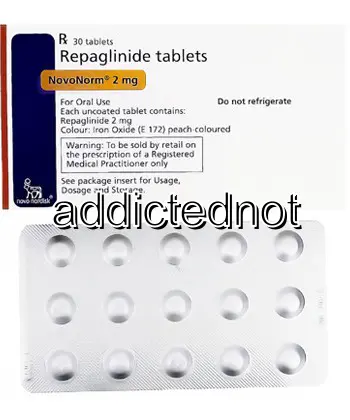| Package | Dosage | Price | Price per Dose | |
|---|---|---|---|---|
| Dosage: 0,5mg | ||||
| 360 pill | 0,5mg | $388.91 | $1.08 | |
| 180 pill | 0,5mg | $204.59 | $1.13 | |
| 120 pill | 0,5mg | $138.65 | $1.15 | |
| 90 pill | 0,5mg | $108.21 | $1.20 | |
| 60 pill | 0,5mg | $76.08 | $1.27 | |
| 30 pill | 0,5mg | $45.64 | $1.52 | |
| Dosage: 1mg | ||||
| 360 pill | 1mg | $620.58 | $1.72 | |
| 180 pill | 1mg | $322.96 | $1.79 | |
| 120 pill | 1mg | $226.58 | $1.89 | |
| 90 pill | 1mg | $187.68 | $2.08 | |
| 60 pill | 1mg | $128.50 | $2.13 | |
| 30 pill | 1mg | $76.08 | $2.52 | |
| Dosage: 2mg | ||||
| 360 pill | 2mg | $992.60 | $2.76 | |
| 180 pill | 2mg | $517.43 | $2.87 | |
| 120 pill | 2mg | $351.71 | $2.93 | |
| 90 pill | 2mg | $277.31 | $3.08 | |
| 60 pill | 2mg | $194.45 | $3.23 | |
| 30 pill | 2mg | $109.90 | $3.69 | |

Repaglinide Description
Overview of Repaglinide
Repaglinide is an oral medication primarily used to manage blood sugar levels in individuals with type 2 diabetes. It belongs to a class of drugs known as meglitinides, which stimulate the pancreas to release insulin. This medication helps to control post-meal blood sugar spikes and maintain overall glucose levels within a healthy range.
How Repaglinide Works
The mechanism of action of Repaglinide involves binding to specific receptors on pancreatic beta cells. This stimulation prompts the cells to produce and release insulin swiftly after meals. Because of its rapid onset of action, Repaglinide is usually taken shortly before each meal, making it a flexible option for patients with irregular eating habits. Its short duration of action also means it has a lower risk of causing prolonged hypoglycemia compared to some other diabetes medications.
Benefits of Using Repaglinide
One of the primary advantages of Repaglinide is its ability to effectively lower postprandial blood sugar levels. Many patients find it beneficial when used alongside other medications or lifestyle changes, such as diet and exercise. Its quick onset and short duration of action make it convenient for controlling blood sugar peaks after meals. Moreover, because it acts rapidly, it tends to have fewer long-lasting effects that could lead to excessively low blood sugar levels.
Potential Side Effects and Risks
Like any medication, Repaglinide may cause side effects in some individuals. Common side effects include hypoglycemia, especially if meals are skipped or delayed. Other reported issues are weight gain, headache, dizziness, or gastrointestinal discomfort. While generally well-tolerated, it’s important for users to monitor their blood glucose levels carefully. Overuse or incorrect dosing can increase the risk of adverse reactions. Patients with liver problems or contraindications to certain medications should consult their healthcare providers prior to use.
Considerations for Use
Patients should adhere strictly to the prescribed dosage and timing when taking Repaglinide. It is essential to coordinate its intake with meals to maximize effectiveness and minimize side effects. Regular blood sugar monitoring is crucial, especially during the initial phase of treatment. It is also important to maintain a balanced diet and incorporate physical activity as recommended by healthcare providers. Combining Repaglinide with other antidiabetic agents should always be supervised by a medical professional.
Summary
Repaglinide is a valuable medication for controlling blood sugar levels in type 2 diabetes. Its fast action makes it suitable for managing post-meal glucose surges. However, users should be cautious of potential hypoglycemia and related side effects. Proper usage, regular monitoring, and medical supervision are vital to ensure its safe and effective use. This medication can significantly aid in achieving better glycemic control when integrated into a comprehensive diabetes management plan.
